Pushing The Green Frontier: How to Live Off The Grid
An off-the-grid home can be as slick as any city dwelling, with the added bonuses of sustainability and nature on your doorstep
An off-the-grid home can be as slick as any city dwelling, with the added bonuses of sustainability and nature on your doorstep
Has the pandemic made you dream of owning a bolt-hole somewhere rural, remote, and gloriously isolated? For true seclusion, you may need to go off the grid. Building a home far from urban infrastructure often means generating your own electricity, sourcing your own water, and dealing with other amenities. Luckily, you don’t have to camp in a tumbledown shack to achieve this goal, with architects delivering desirable off-grid houses that are sustainable and stylish.
Living off the grid means disconnecting from mainstream gas, electricity, water, and waste networks, relying instead on self-sufficient alternatives such as geothermal heat pumps, solar or wind power, wells, and septic tanks. It’s a growing trend; the off-grid solar industry alone is worth an estimated $1.75 billion a year globally.
People are voting with their feet and moving off grid—saying goodbye to energy bills is really appealing—Cameron Anderson
There are currently more than 250,000 people in the United States living off the grid, and an estimated 150,000 off-grid residents in the United Kingdom. Some are keen to do their bit for the health of the planet by reducing their consumption and carbon footprint. Others just want to jettison hefty utilities bills for a more controllable energy supply. If existing permanently without traditional utilities isn’t for you, why not consider an off-grid vacation home for a taste of liberating independence?
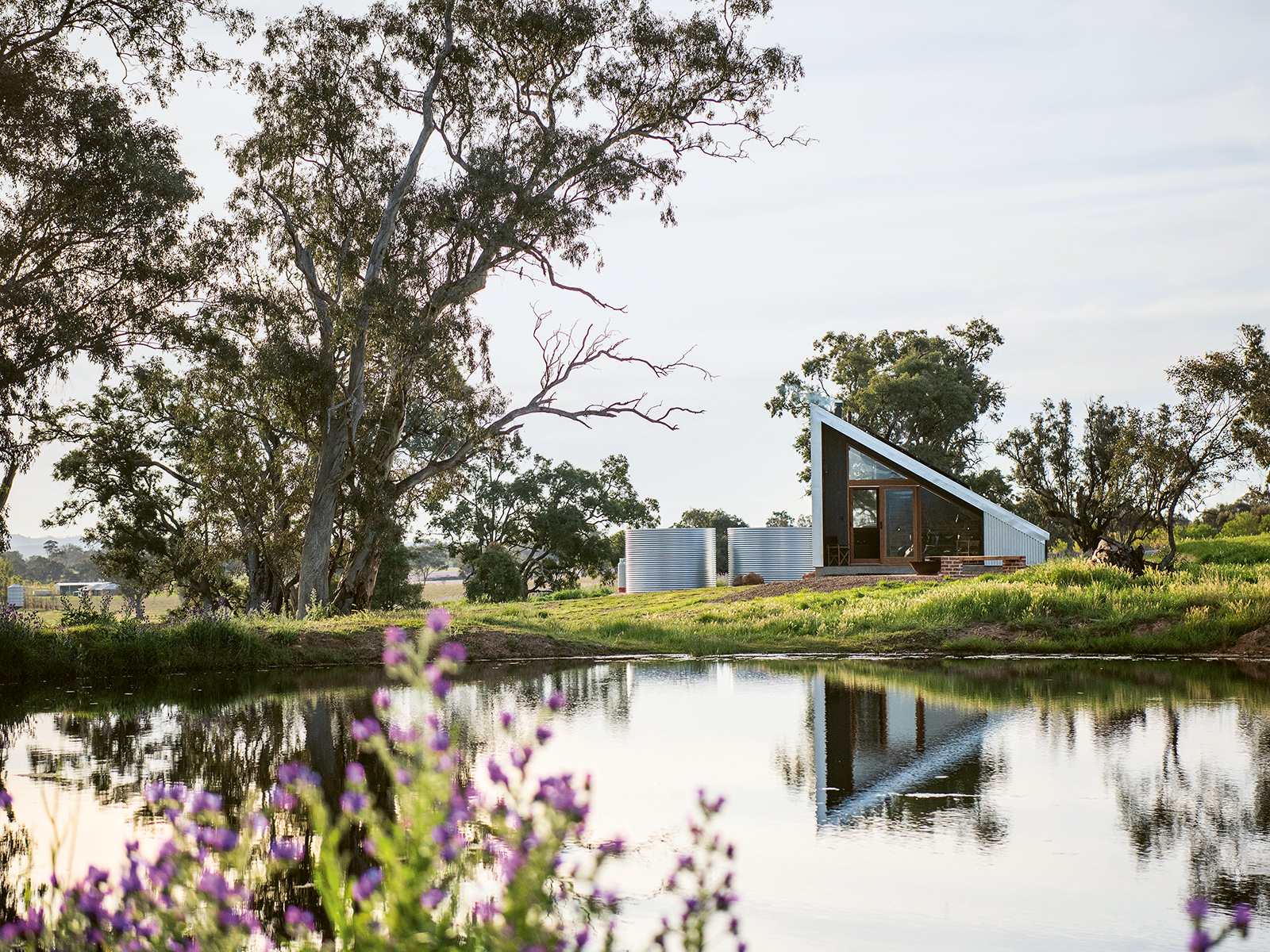
“Off-grid architecture is quickly growing in popularity,” says Australian architect Cameron Anderson. “A lot of people are voting with their feet and moving completely off grid. Saying goodbye to energy bills is really appealing!”
South Africa-based architect Ant Vervoort is also a convert. “I believe in regional sustainability,” he says. “The cost and environmental benefits of off-grid buildings make these homes desirable. Cutting dependence on a flawed resource system increases reliability, decreases running costs, and reduces one’s climatic impact.”
The global pandemic has fueled the trend to live off the grid, says the team at California’s Anacapa Architecture. “People realized the benefits of being connected to nature and serenity. We witnessed a mass exit from major cities as the pandemic emphasized the importance of the home and our personal space.”
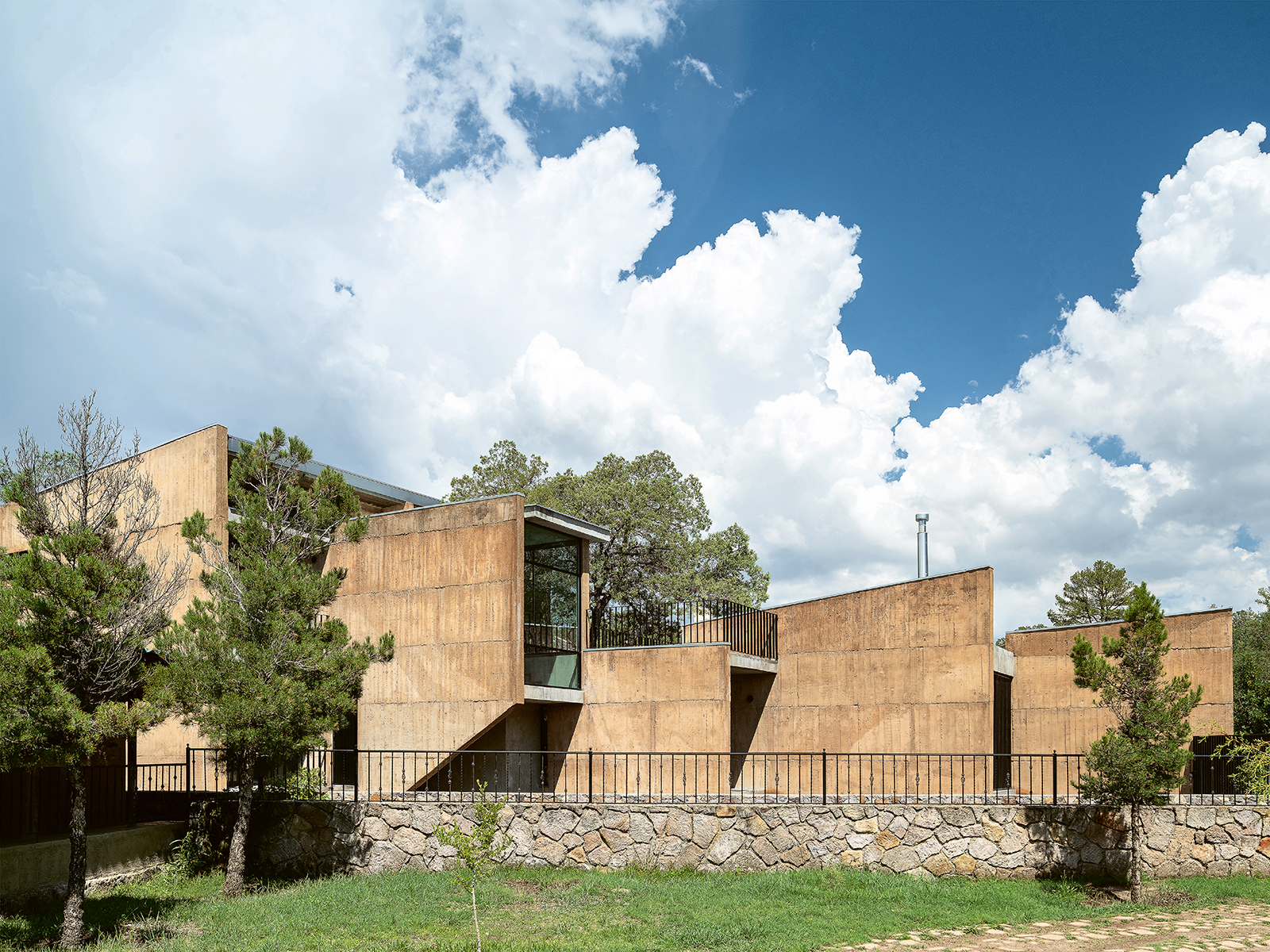
So who is leading the charge? “Most early adopters are higher-net-worth individuals due to the initial high costs of technology uptake,” says Vervoort. “But in terms of electricity production and wastewater management, costs are dropping steadily—and will soon outperform the status quo.” Eco-aware architects are also driving demand as well as reacting to it. “It is more often us asking clients to produce off-grid buildings, rather than them asking us for them,” Vervoort adds.
Off-grid vacation retreats top the request list, outnumbering primary residences, says Anderson, although work-from-home spaces are proving popular. “COVID-19 has changed the way certain parts of society can live and work and so more remote options for working are suddenly feasible. However, there is now a need for more reliable telecommunications. We’ve met people who’ve made a regional switch only to be let down by poor internet or electricity. Off-grid infrastructure helps with uninterrupted connectivity.”
“Peace and quiet are often at the forefront with off-grid architecture,” according to Anacapa. “The inherent privacy of an off-grid site can free it from the typical design constraints of an urban location where your neighbor might be just a few feet away. Disconnection from our modern world is difficult to achieve, and off-grid homes offer an escape from the distractions and a space to think, reflect, and rest. It can feel like it’s just you and nature.”
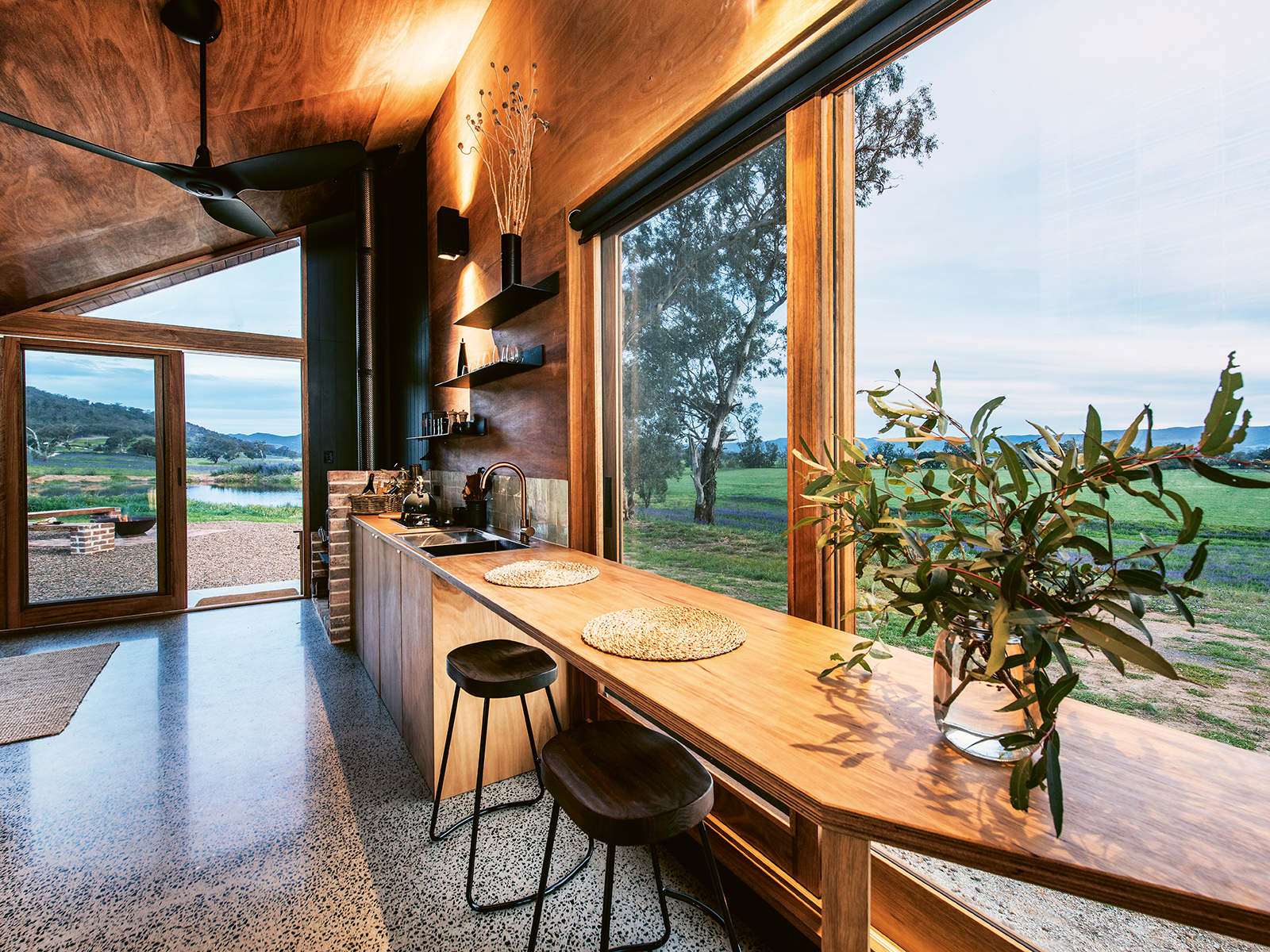
Remote sites can be environmentally sensitive though, governed by stringent building regulations protecting rural areas and requiring meticulous planning to ensure minimal disruption when installing necessary utilities. Long-term cost savings are an obvious benefit with off-grid homes, but the expensive up-front costs need to be factored in. Compact homes can still have a high infrastructure cost per square meter if they include a kitchen and bathroom, and need hot water.
Disconnection from our modern world is difficult to achieve, and off-grid homes offer an escape from the distractions and a space to think, reflect, and rest—Anacapa Architecture
“The most challenging aspect of off-grid architecture is creating buildings with naturally low energy needs,” says Vervoort. “This requires designers who are climatically sensitive and environmentally astute—rare skills in an industry more interested in tiles and claddings!”
An Australian take on the off-grid lifestyle, Gawthorne’s Hut, pictured above, is a small but beautiful example of sustainable style. A luxury, two-person, off-grid stay on a working farm near Mudgee in rural New South Wales, it was designed by award-winning local practice Cameron Anderson Architects.
The simple space contains an open-plan bedroom/living area/kitchenette, freestanding tub, and wood-burning fire. Packing an eco-friendly punch, the compact footprint incorporates an off-grid solar power system and battery storage, rainwater storage, and passive solar shading. “Smaller, off-grid homes have a role to play in easing the burden of the high cost of housing,” says Anderson. “You can build small, sensitive houses that are entirely off grid for a great price.”
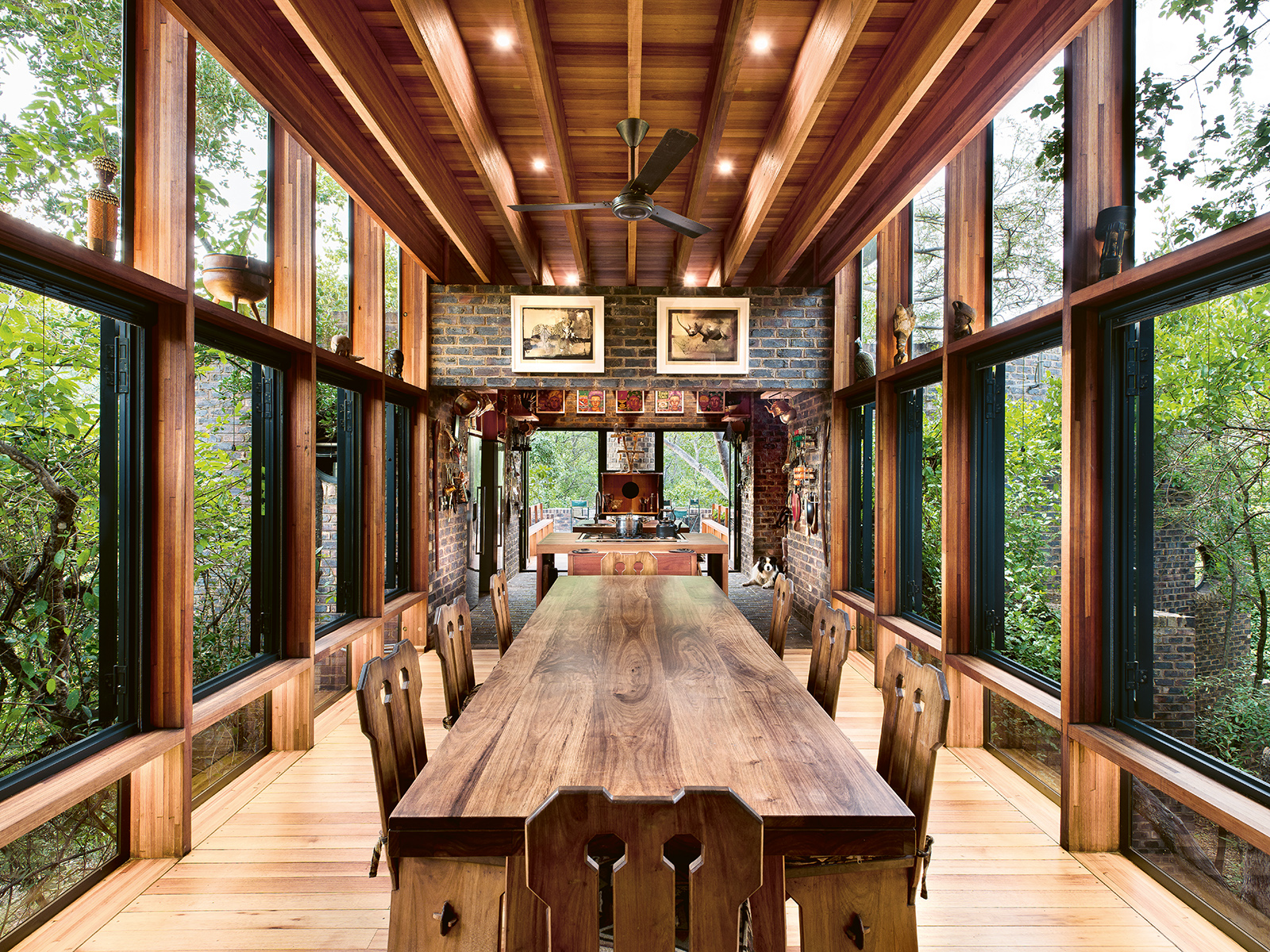
The stunning off-grid property The House of the Big Arch in South Africa was designed as the primary residence for a couple of retired vets by Johannesburg architectural collective Frankie Pappas, founded by Vervoort. Enveloped by a nature reserve in the Waterberg massif, its soaring, skinny brick hubs and wood-and-glass bridges respond to the sandstone cliffs and forest canopy, without a single tree being removed. “The building is incredibly respectful to its inhabitants—and its environment,” says Vervoort.
The three-level house is a 90-minute drive from the nearest city, so getting services to the site would have been prohibitively expensive. Instead, solar panels harvest energy, rainwater is collected and filtered from roofs and a stream, and black and gray water is stored and processed.
Crucially, its architecture exploits passive ventilation and natural light and shade to minimize energy demands. “The house is climatically appropriate and comfortable to live in without any active air-conditioning or artificial light during the day—the key environmental experience of a well-designed off-grid building,” Vervoort explains.
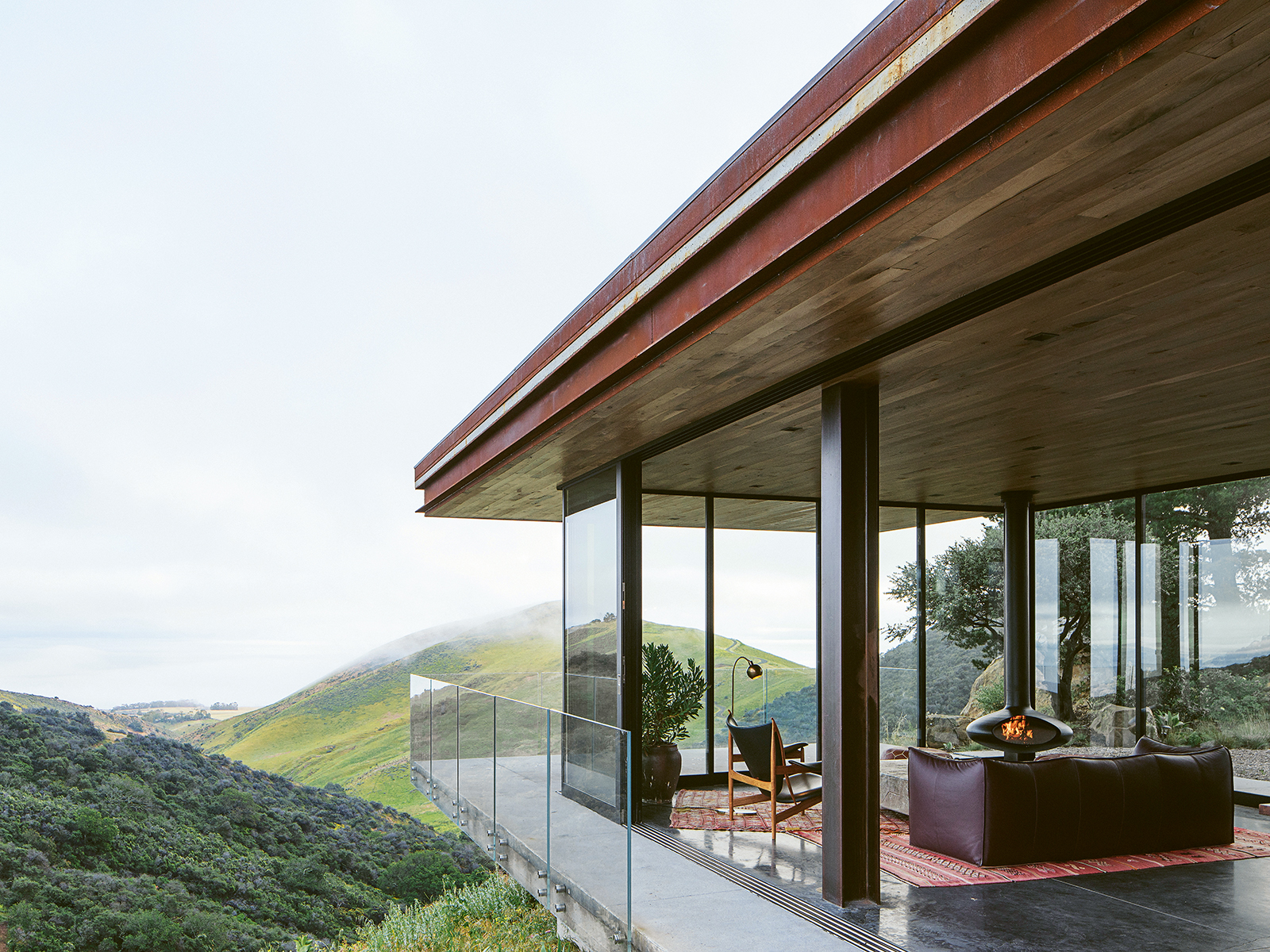
Set in a wildlife preserve on a rare undeveloped stretch of Californian coastline, the Off-Grid Guest House sits near its owners’ main home, both resolutely off-grid due to the remote location. The steel-and-concrete guesthouse’s low profile and grass roof blend into the hilly landscape, with Pacific views from cantilevered decks.
Designed by Santa Barbara’s Anacapa Architecture, the two-bedroom getaway is fully powered by a solar photovoltaic energy system and exploits low-usage appliances and LED lighting. Radiant floor heating, cross ventilation from sliding glass doors, and the insulating green roof regulate interior temperatures (the latter also conserves water).
Clients requesting off-grid homes are usually seeking a slower pace of life, says the Anacapa team. “It could be a small cabin or a modern house. Whether an off-grid property functions as a second home or a full-time dwelling, it offers something radically different from the everyday.”
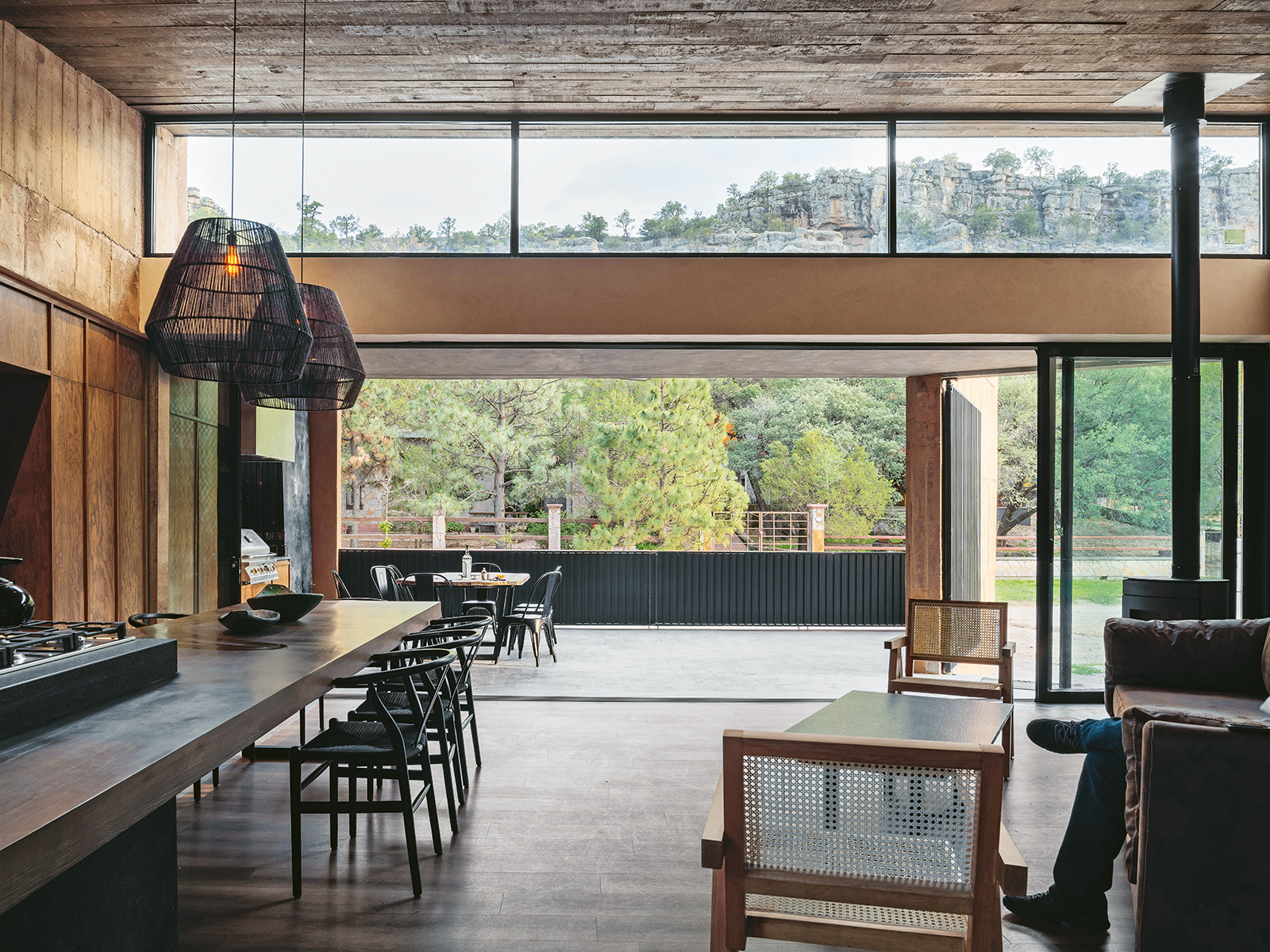
Off-grid architecture is trending for glamorous second homes such as the four-bedroom Casa Majalca in Chihuahua, northern Mexico, by OAX Arquitectos. Designed as a vacation getaway for a large family, its earth tones and concrete walls mirror the rock formations of the adjacent national park, with big windows framing desert vistas.
Clients’ busy urban lives are fueling a need to escape and unwind, explains principal architect José García Toledo. “The remote locations demand architects be more creative and rely on innovative, local, environmentally responsible technologies.”
Solar panels generate Casa Majalca’s electricity, while a septic system processes wastewater. The house encourages indoor–outdoor living, with “spaces designed in harmony with nature, promoting a healthier, more sustainable life.”
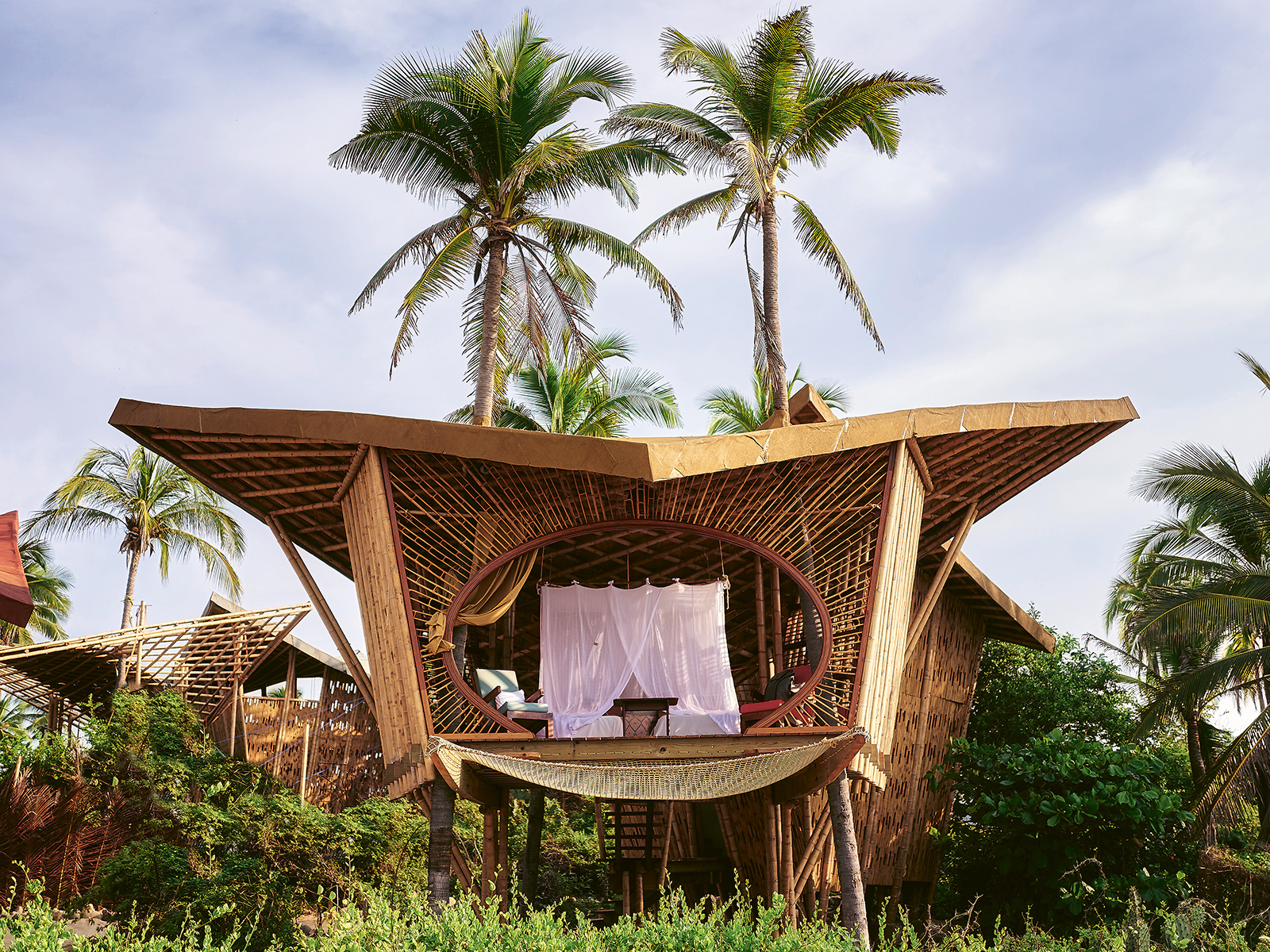
To see if living off the grid is for you, why not try before you buy? The mantra of eco-conscious Mexican resort Playa Viva is “where your vacation meets your values.” Its six new bamboo treehouses by the beach were designed by Nomadic Resorts studio to resemble manta rays. Run by off-grid solar power, the 18-room hotel eschews air-conditioning, conserves water, composts, and promotes local farm-to-table dining. “Off grid is about being immersed in the luxury of nature,” says resort owner David Leventhal.
“Playa Viva is the travel choice for conscious consumers who want all the luxury and none of the guilt,” he adds. “You don’t have to give up luxury. For example, our water is heated by the sun, using no carbon, so you can take as long a hot shower as you want to. The gray water is used afterwards in irrigation.”
Leventhal is also passionate about the downstream impact of Playa Viva’s transformational experiences. “It’s about travelers having that ‘Aha!’ moment when they realize, ‘Wow, the hotel runs off grid?’ That creates awareness that they can take the same technology home or to their second home.”
The off-grid revolution is just beginning, says Anacapa. “We will definitely see a continuous push towards ‘non-traditional’ living.” Even city dwellers can embrace off grid, Vervoort believes. “Producing off-grid buildings in urban areas is equally possible and important.”
On the Market
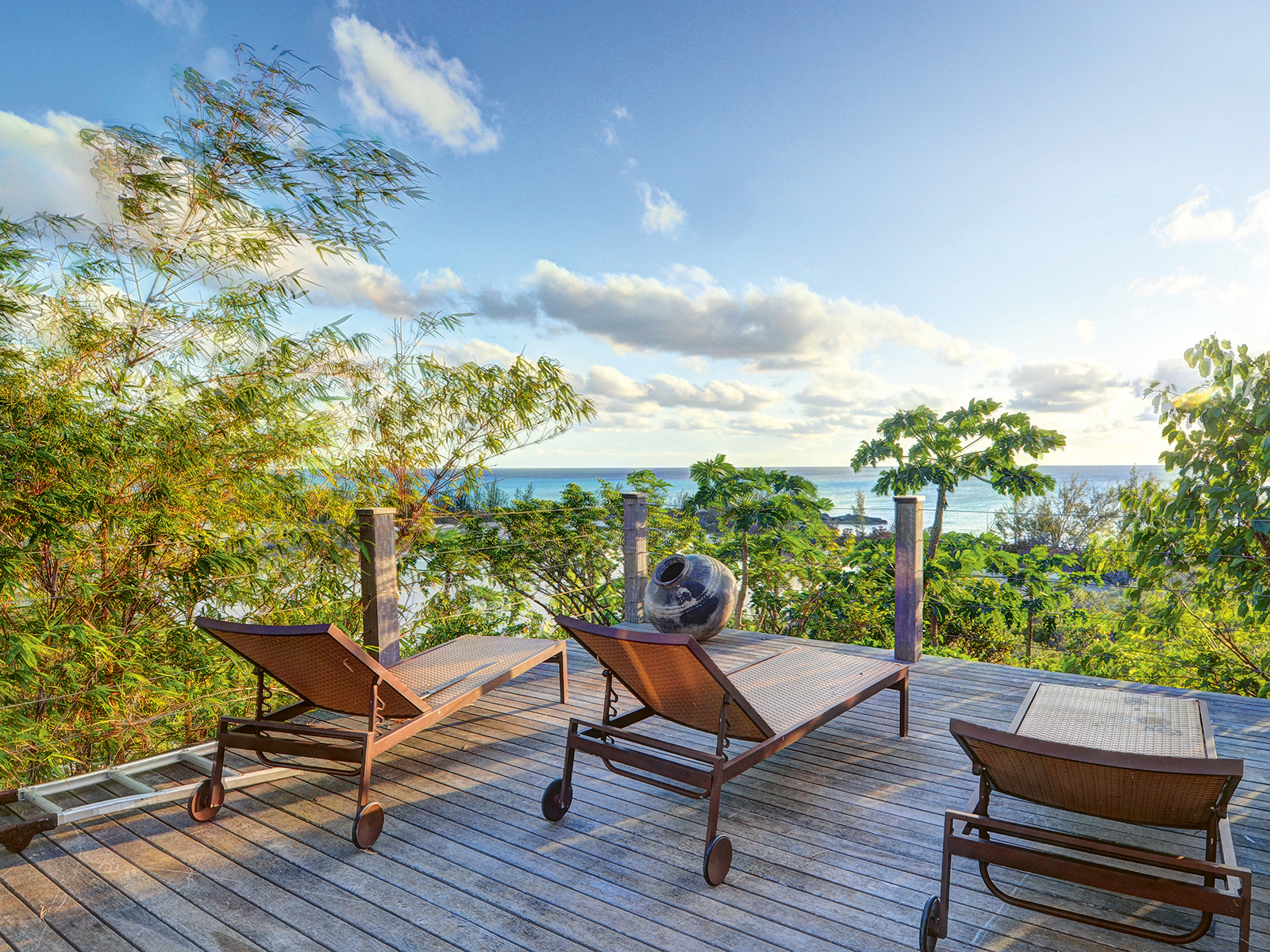
Positioned high on a hill with 180-degree views of the ocean, pristine beaches, and a picturesque lagoon, this stunning artists’ retreat, on the market with H.G. Christie Ltd, is as eco-friendly as it is beautiful. Completely off grid, its high-tech services including air conditioning are powered by solar panels, while satellite internet access keeps the custom-designed four-bedroom home connected to the rest of the world—so residents can work or just sit back and enjoy this island paradise.
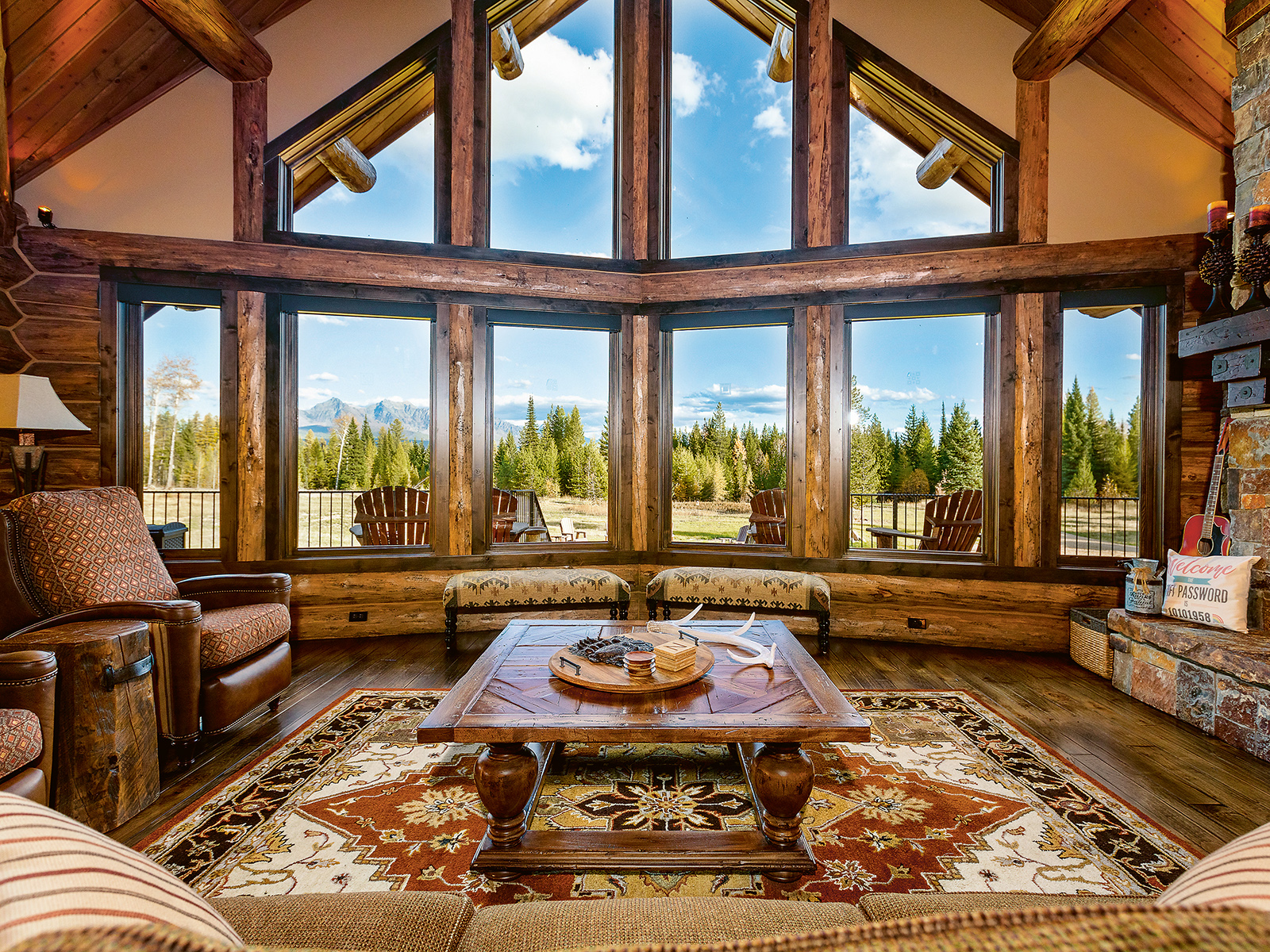
Breathtaking views of the majestic Livingston Range mountains in Montana’s Glacier National Park are showcased through floor-to-ceiling windows in this superb home nestled amid 20 acres (8 ha). High-end finishes combine with green credentials—energy is provided by solar panels and backed up by a propane generator, and a high-speed internet connection is on hand to make this ideal as either a vacation property or a primary residence. It is on the market with PureWest Real Estate.
Banner image: The House of Big Arch, South Africa. Courtesy: Frankie Pappas